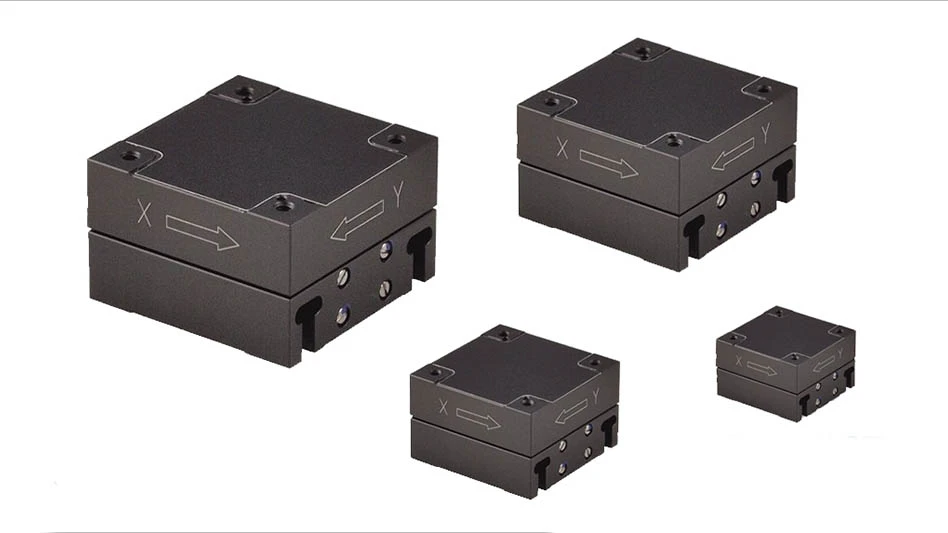
A non-commutated DC linear actuator, typically referred to as a voice coil, is capable of a displacement in excess of 5". In addition, voice coil actuators can move bi-directionally, have a constant force over the stroke, and can be used for closed loop position and force applications.
A solenoid can generate high forces at very short strokes, however it requires a spring return because it is operated unidirectionally and the force output declines rapidly through the total displacement. These spring returns are normally used only for short strokes, not typically longer than 0.5". The typical application for a solenoid is the simple opening or closing of a switch or valve – not for force or position control applications. 
What is a voice coil actuator?
Voice coil actuators or non-commutated DC linear actuators consist of a permanent magnetic field assembly (permanent magnets and ferrous steel) and a coil assembly. The current flowing through the coil assembly interacts with the permanent magnetic field and generates a force vector perpendicular to the direction of the current. The force vector can be reversed by changing the polarity of current flowing through the coil.
The force generated by the voice coil is proportional to the cross product of the current flowing through the coil and the magnetic flux in the permanent magnetic field, as dictated by Lorentz’ force equation. Either the coil assembly or permanent magnetic field assembly can be used as the moving member in a voice coil actuator.
What is a solenoid?
Solenoids consist of a coil that is contained in a ferrous steel housing and a movable steel slug or washer. An electromagnetic field is generated by current being applied to the coil. The magnetic field intensity determines the amount of force that can be generated by the solenoid. When the power is turned off, the force drops to zero and the spring returns it to its extended position.
|
|
Voice Coil Actuator |
Solenoid |
|
Force |
Low to medium |
High |
|
Stroke |
5 inches maximum |
¼ inch maximum |
|
Constant Force |
Yes |
No |
|
Reversible |
Yes |
No |
|
Position/Force Control |
Yes |
No |
|
Cost |
Moderate |
Low |
Should I select a voice coil actuator or a solenoid?
If your application simply requires opening or closing a valve a solenoid might be an option, however they have limitations when it comes to force linearity and stroke length. Due to the fact that voice coil actuators typically cost more than an off-the-shelf solenoid, many customers try and use a solenoid when a voice coil actuator is the more appropriate solution. In applications that require a constant force throughout the travel length, a solenoid is insufficient due to the diminished force through the travel – particularly important in oscillatory systems. Another advantage that the voice coil provides is force control, without a feedback device, because the force output (at any position in the stroke) is directly proportional to the current input. This type of actuation lends itself to generally a higher force density, thus achieving higher strokes and forces in a smaller package size to the solenoid counterparts.

Source: H2W Technologies
Latest from Aerospace Manufacturing and Design
- Talking machine tools with the professionals who build them
- Tools and strategies for improving your machining processes
- America Makes announces QTIME project call
- Innovation meets precision for 40% faster machining
- Upcoming webinar: Pro tips from a supply chain strategist
- Heart Aerospace relocates to Los Angeles
- Fixtureworks introduces Stablelock Clamps
- Piasecki acquires Kaman's KARGO UAV program





